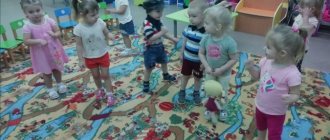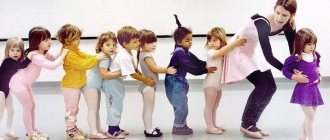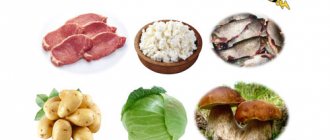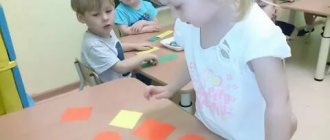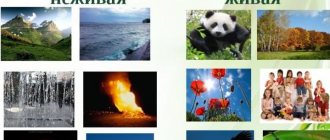Summary of a lesson on ecology in the junior preschool group “I am part of nature”
Bibliographic description:
Stepanova, A. V. Summary of a lesson on ecology in the junior preschool group “I am part of nature” / A. V. Stepanova. — Text: direct // Questions of preschool pedagogy. — 2021. — No. 10 (47). — P. 119-126. — URL: https://moluch.ru/th/1/archive/208/6677/ (access date: 12/19/2021).
Educational field and direction: environmental education.
The purpose of the lesson is to develop in children (from 1.5 to 3 years old) ideas about the world of plants and animals, as well as a correct and caring attitude towards them.
Tasks:
— Contribute to deepening children’s knowledge about the natural world, plants, wild animals and birds.
— To foster children’s interest in the forest world and its inhabitants, to promote caring attitude towards animals and plants.
Integrated educational areas: cognitive, speech, social and aesthetic development.
Preliminary work: demonstration of visual materials with images of plants, mushrooms and berries, as well as forest animals using a presentation.
Demonstration material: presentation “I am part of nature”, indoor plant, watering can with water, spatula.
Handouts: drawings of mushrooms and berries, coloring drawings with animals, crayons and pencils.
Progress of the lesson:
Educator: Children, today we will go on a small but very amazing journey, where do you think? I'll give you a hint, now I'll tell you a riddle, and you guess:
“Squirrels and wolves live in it,
Oak trees and fir trees grow in it
Tall - to the skies!
They call him...”
Children: Forest!
Educator: Forest! Right! Today we will go with you to the beautiful world of nature. This is what surrounds us, what pleases our eyes and inspires us, what many writers write about.
Educator: Let's look at the screen together, look carefully at the trees. Do you know them, have you met them before when you were walking?
Children: Yes
Teacher: *comes to the table with a flower to demonstrate how to care for it for children*
Did you know that trees are a source of oxygen, what we use to breathe, and therefore we need to take care of trees and plants. Could you take care of plants?
Children: Yes
Educator: *demonstrates the process on a houseplant* Do you know what to do? Now I will show you how we can take care of indoor plants. Flowers love the sun as much as we do, so they need sunlight and clean air to grow. Flowers also love to drink water, so we must water the flowers and loosen the soil for proper and rapid growth [2, p. 76].
Educator: Flowers and plants grow not only on our windowsill, but also in the forest. Let's head to our forest corner.
Teacher and children: *come to the screen (presentation with the forest and its inhabitants) *
Educator: The forest is a home for many animals, it is rich in trees, plants and birds. The forest treats us with berries, nuts and mushrooms (we show it in the picture and tell you about it).
Educator: Do you know that not all mushrooms and berries can be eaten? You need to be able to distinguish between edible and inedible mushrooms and berries. When we go into the forest to get them, we will collect only edible mushrooms in our basket, for example, porcini mushrooms, chanterelles, and honey mushrooms. Under no circumstances will we put poisonous mushrooms in our basket, for example the well-known fly agaric, as well as toadstool. Among the berries there are also edible ones, for example, strawberries, cranberries and blueberries, and inedible ones, which are also dangerous to our health, for example, wolfberry and crow's eye, look at the screen [1, p. 107].
Assignment: Now let's go into the forest and collect our own basket *there are drawings of mushrooms and berries on the floor, the kids are collecting edible mushrooms and berries* (Appendix 1).
Educator: How many mushrooms and berries do you know! How amazing! You can even go on a visit with such an edible basket. Let's visit our forest animals, are you ready?
Children: Yes!!!
Educator: The forest is home to many animals, for example, foxes, bears, wolves, squirrels and hedgehogs live there, and we can also see deer and elk.
Assignment: At the end, you are given the next mission, you must collect the animals in their forest home, decorate your animals and in the end we will unite them together! *hands out coloring books with animals, crayons and pencils to the children* (Appendix 2).
Annex 1
Appendix 2
Literature:
- Nikolaeva, S.N. Young ecologist: program of environmental education in kindergarten / S.N. Nikolaeva. - M.: Mozaika-Sintez, 2010. - 107 p.
- Nikolaeva, S. N. Young ecologist: a system of work in the younger group of kindergarten: for working with children 2–4 years old / S. N. Nikolaeva. - Moscow: Mosaic-Sintez, 2010. - 76 p.
- Solomennikova O. A. Classes on the formation of elementary environmental ideas. The first junior group of kindergarten. Class notes - M.: Mozaika-Sintez, 2007. - 48 p.
